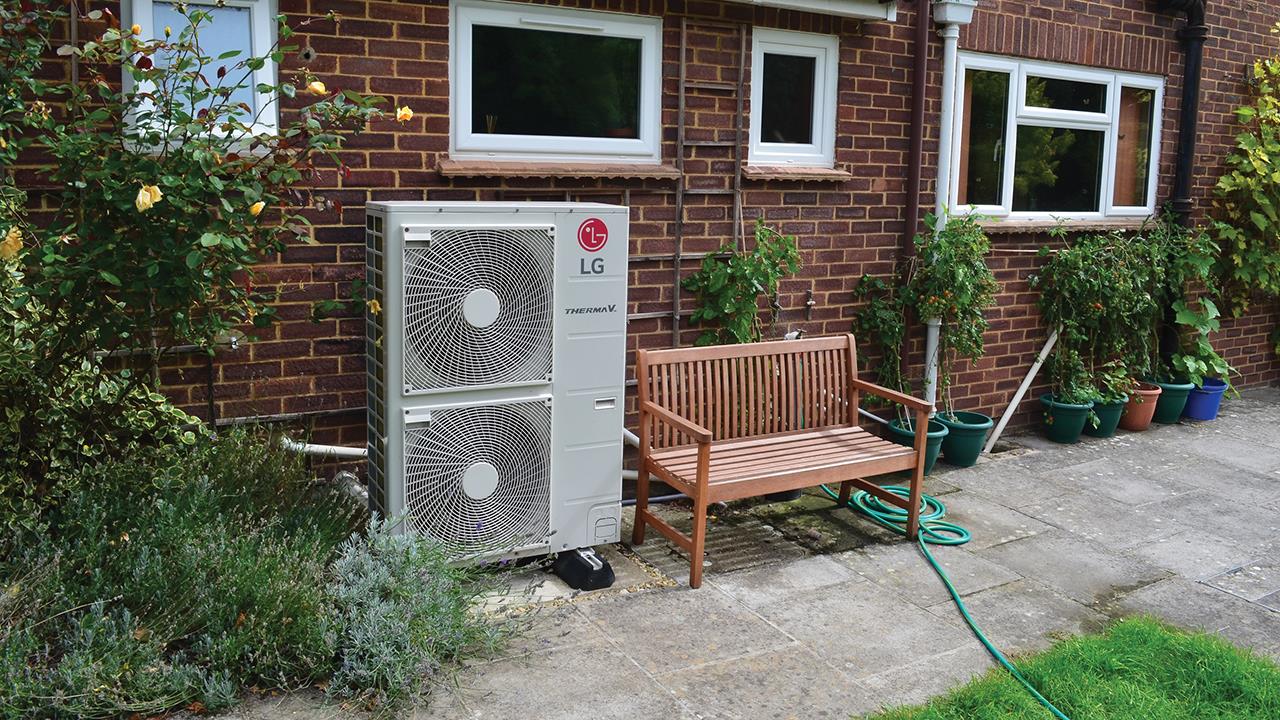

Andrew Hooper, Heating Manager – UK and Ireland at LG, runs installers through the ins and outs of air to water heat pump systems.
Multiple boiler manufacturers in recent months have been lobbying in favour of hydrogen as the fuel of the future, allowing the white boxes they have become wedded to, to continue to be produced, but we’ve not heard quite so much about the infrastructure changes required across the country to enable the new fuel to actually make it into our homes in sufficient and reliable quantities to enable this technology to become the new ‘gas’.
The weird thing about all this, to a number of heating professionals, is the marked reluctance to even consider the option of using a tried and tested technology that has made huge strides across the rest of Europe, in Scandinavia and Canada which, when we last looked, have far more testing climates than we have here in the UK – the heat pump.
Ground source heat pumps do require significant disruption to install and either a lot of land or an expensive drilling operation to get down into the ground, but air source heat pumps come with no such issues. And, strangely, most of the traditional gas and oil boiler manufacturers have flirted with their own heat pump products to one degree or another for a number of years.
There are a number of very advanced heat pump products readily available here in the UK now and sales have increased significantly, but they are still very much lower than in comparable European countries – such as Germany or Denmark.
Air to water heat pump (AWHP) systems – monoblocs or splits – present a variety of energy-saving options for a home’s heating and hot water system. By replacing a traditional gas, oil, or solid fuel system, an AWHP can significantly reduce carbon emissions and energy usage. The device’s absorption of natural energy from external air makes it consume less energy than conventional heating systems. And they can operate successfully at low temperatures – the LG Therma V split, for instance, has 100% capacity at temperatures as low as -7°C – and it’s very rare for temperatures in the UK to go that low, even for a day each year.
Defining systems
The terms ‘split’ and ‘monobloc’ refer to how the system is required to be set up in a home.
A monobloc is a bit like a combi boiler and is literally a ‘single block’ system, where the heat pump has all of its components (apart from the hot water cylinder which is installed in the home) located inside a heat pump unit situated outside the home.
Because a monobloc does not require someone with F Gas qualifications to get involved in the use of refrigerants, they are an excellent additional string to the bow of most professional heating installers who, after attending a relevant training course, will be well placed to join the growing band of installers that will be required to fit these excellent heating systems here in our home market.
A split heat pump unit, however, has both an outside unit, which incorporates the heat exchanger and refrigerant, and an internal unit, which sits inside the property, usually in a utility or boiler room.
Most homes in the UK are ideal for a monobloc air to water heat pump. A split system is an option generally for more complex installations, and it can be installed up to 30m away from the home, which gives far more installational flexibility.
Temperature control
Low temperature air to water heat pumps produce water at a lower temperature. These systems don’t produce water as hot as a traditional boiler will, as they generally only reach around 50°C at a maximum. These systems are perfectly suited to newbuild homes that tend to be well insulated. To be at their most effective, they operate well with either larger capacity – possibly K3 design – radiators, or a higher number of radiators and/or underfloor heating.
High temperature air to water heat pumps are designed for poorly insulated or particularly large properties, and those where replacing existing radiators or improving the insulation in the home isn’t possible. These high temperature heat pumps, offered by a few manufacturers including LG, can heat water up to 80°C.
If you'd like to keep up-to-date with the latest developments in the heating and plumbing industry, why not subscribe to our weekly newsletters? Just click the button below and you can ensure all the latest industry news and new product information lands in your inbox every week.